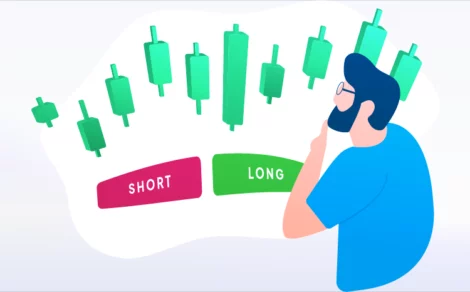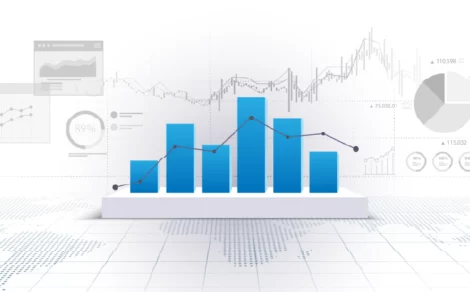Algorithmic systems operate through computer programs that analyse market data using mathematical models. They identify trading opportunities based on predetermined criteria, execute orders automatically when conditions are met, and manage positions according to programmed risk parameters without human intervention.
Toruscope » Online Trading » What Is Algorithmic Trading: A Comprehensive Guide
The Indian financial ecosystem has evolved significantly, with technology playing a crucial role in trade execution. Amongst these developments, algorithmic trading and its impact on interactions within the financial markets have seen the most significant transformation. This high-frequency tactic employs computer algorithms to trade securities at hyperfast speeds and frequencies that humans can’t replicate.
In this blog, we will cover what is algorithmic trading, its key advantages, associated risks, and some of the most commonly used strategies.
Algorithmic Trading Meaning
Algorithmic trading, also known as algo-trading, uses pre-programmed rules to automatically execute trades when specific market conditions are met, eliminating manual intervention throughout the process.
These algorithms, written in programming languages, analyse real-time and historical market data to help you make informed trading decisions.
By monitoring conditions and executing trades in milliseconds, these systems eliminate emotional bias and human error, offering a level of speed and precision that manual trading cannot match.
Benefits of Algorithm-Based Trading
Here are some benefits of algorithm-based trading:
- Speed and Efficiency: Algorithms can analyse multiple markets and execute orders within milliseconds. This allows you to capture opportunities that would otherwise not be possible for human traders to identify and act upon.
- Emotion-Free Trading: By removing human emotions from the equation, algorithmic systems eliminate fear and greed-based decisions that often lead to poor trading outcomes.
- Reduced Transaction Costs: Automation helps minimise transaction costs by executing large volumes of trades within a short period.
- Enhanced Risk Management: Sophisticated algorithms incorporate risk management protocols that can automatically adjust positions based on predefined risk parameters, ensuring optimal risk management.
- Backtesting Capabilities: Traders can test strategies against historical data before deploying them in live markets, helping to refine approaches and understand potential performance.
Popular Algorithmic Trading Strategies
Various algorithmic strategies target different market opportunities, each designed to capitalise on specific patterns or market inefficiencies.
- Trend Following Strategies: These algorithms identify directional market movements using indicators such as moving averages, automatically taking positions as per the trend direction.
- Mean Reversion Systems: Based on the principle that prices eventually revert to their average (mean), these algorithms buy assets when they are significantly undervalued and sell when they are overvalued.
- Statistical Arbitrage Models: These complex systems analyse historical relationships between securities to identify temporary mispricings, executing trades to profit from price convergence.
- Market Making Algorithms: By simultaneously placing buy and sell orders, these systems provide market liquidity while managing inventory risk and generating profits from the bid-ask spread.
- Sentiment Analysis Trading: Modern algorithms analyse news feeds and social media data to determine sentiments in the market and execute trades before information fully impacts prices.
Potential Risks and Limitations of Algorithmic Trading
While algorithmic trading offers numerous advantages, it also comes with several risks that investors should understand. Here are some downsides of algorithmic trading:
- Technical Failures: System crashes, connectivity issues, or coding errors can lead to unexpected losses or missed opportunities.
- Market Anomalies: Unusual market volatility or unpredictable events can trigger abnormal algorithm behaviour, potentially resulting in significant losses.
- Over-Optimisation: Strategies that perform excellently in backtests may fail in live markets due to over-fitting to historical conditions.
- Regulatory Concerns: Changing regulations around automated trading might impact strategy viability or impose additional compliance costs.
- Dependency on Data Quality: Algorithms are only as good as the data feeds they rely on. Inaccuracies in the data can result in poor trading decisions.
Successful algorithmic traders continuously monitor their systems and make necessary adjustments as market conditions evolve.
Final Words
Algorithmic trading is a powerful approach to navigate modern complex markets. As computing power increases and algorithms become advanced, the prevalence of automated systems is likely to continue growing across Indian financial markets. However, success in algorithmic trading requires a thoughtful approach. Balance innovation with a clear understanding of the associated technological, regulatory, and market-related risks.
Visit Torus Digital to learn more about algorithmic trading today.
Frequently Asked Questions
A common algorithmic trading example is pairs trading, where the system monitors two historically correlated stocks. When their price relationship deviates significantly, the algorithm shorts the outperforming stock while buying the underperforming one, expecting their relationship to revert to normal.
The initial investment varies widely depending on your approach. The more complex your strategy and infrastructure needs, the higher your starting capital requirements will be.
Related Reads
What is Slippage in Trading? Meaning, Causes & Impact Explained
In trading, timing and precision often define success. However, even when a trader believes...
By: torus
- 7 mins
- 01.Jul.2025
- 4(1)
- 96
What is an Option Contract?
Imagine having the flexibility to buy or sell shares at a fixed price, no...
By: torus
- 7 mins
- 01.Jul.2025
- 0(0)
- 43
Types of Financial Instruments You Should Know Before Investing
Before investing funds in any market, it is essential to understand what financial instruments...
By: torus
- 7 mins
- 01.Jul.2025
- 0(0)
- 39
What are Contracts for Difference (CFD)?
Contracts for Difference, commonly known as CFDs, are financial instruments that allow traders to...
By: torus
- 9 mins
- 01.Jul.2025
- 0(0)
- 38
Difference between Short Position & Long Position
Understanding the concepts of short and long positions is essential for anyone interested in...
By: torus
- 8 mins
- 01.Jul.2025
- 0(0)
- 38
Essential Trading Terminologies You Need to Know
Trading in financial markets opens a world full of opportunities. For many first-time investors,...
By: torus
- 8 mins
- 01.Jul.2025
- 0(0)
- 47
Disclaimer: The content provided in this blog is for informational purposes only and does not constitute financial advice or recommendations. The content may be subject to change and revision. Readers are encouraged to conduct their own research and consult with a qualified financial advisor before making any investment decisions. Torus Digital and its affiliates takes no guarantees whatsoever as to its completeness, correctness or accuracy since these details may be acquired from third party and we will not be responsible for any direct or indirect losses or liabilities incurred from actions taken based on the information provided herein. For more details, please visit www.torusdigital.com.
Tenneco Clean Air IPO Listing: Strong Market Debut with 27% Premium
Tenneco Clean Air India Ltd made a confident entrance into the public markets on...
By: torus
- 5 mins
- 19.Nov.2025
-
3.7(6)
-
170
Stock to Buy Today: November 19, 2025
The Indian stock market witnessed a mild decline on November 18, 2025, ending a...
By: torus
- 4 mins
- 19.Nov.2025
-
4.3(3)
-
170
Mirae Asset Infrastructure Fund NFO: A Sector-Focused Bet on India’s Growth
Mirae Asset Mutual Fund has launched a new equity scheme — Mirae Asset Infrastructure...
By: torus
- 4 mins
- 18.Nov.2025
-
4.3(6)
-
170
Emmvee Photovoltaic IPO: Shares Make Muted Market Debut, List Flat At ₹217
Emmvee Photovoltaic Power made a muted debut on 18 November 2025, listing flat at...
By: torus
- 3 mins
- 18.Nov.2025
-
3.7(6)
-
170








